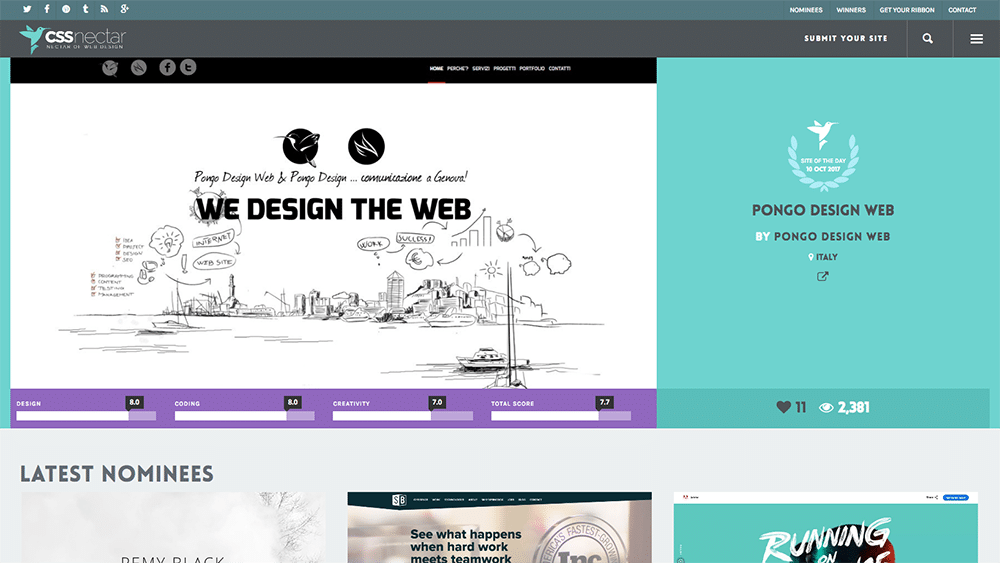Exploring the Effect of Responsive Website Design on Accessibility and Individual Complete Satisfaction Throughout Various Instruments
The appearance of responsive web style (RWD) has changed the electronic landscape, specifically in boosting ease of access and user fulfillment across a wide range of tools. By using adaptable formats and flexible interfaces, RWD not just provides to varied individual demands but likewise resolves the essential relevance of inclusivity in internet experiences.
Meaning of Receptive Web Design

The core concept of RWD is to give an optimum watching experience, that includes very easy reading and navigating without the need for excessive resizing or scrolling. This adaptability is vital in a digital landscape where individuals gain access to information through various tools with varying display resolutions. RWD not just boosts functionality however also improves lots times, as it normally utilizes a single codebase to serve numerous gadgets, minimizing the demand for different mobile websites.
Eventually, Responsive Internet Layout aims to produce a cohesive and engaging user experience, ensuring that web content is aesthetically enticing and functionally efficient, regardless of the device being utilized. This adaptability is critical in meeting the varied needs these days's net customers, promoting engagement and contentment throughout platforms.
Importance of Access
Just how can we guarantee that all customers, regardless of their capacities, can engage with internet material efficiently? Access in website design is of critical relevance, as it fosters inclusivity and ensures equivalent access to info for people with disabilities. This includes aesthetic, acoustic, and cognitive impairments, needing developers to consider diverse customer needs.

By focusing on availability, organizations not only adhere to legal demands but likewise boost their brand reputation, showing a commitment to social responsibility. Available web sites typically result in boosted usability for all individuals, as attributes developed for inclusivity can profit a broader audience.
Eventually, the value of access goes beyond mere compliance; it is regarding developing an electronic setting where every customer can browse, understand, and involve with material effectively, thus enhancing the general web experience for everybody.

Individual Contentment Across Devices
Lots of users expect a smooth experience when accessing internet content throughout various gadgets, from desktop computers to smartphones. This expectation is rooted in the raising diversity of devices and display dimensions available today. Responsive internet layout (RWD) plays an essential function in fulfilling these assumptions by ensuring that sites adjust fluidly to various display screen environments.
Individual fulfillment is considerably affected by the access and usability of a site. When individuals can quickly browse, review, and interact with content despite the tool they are making use of, their total satisfaction increases. A well-implemented responsive design reduces the requirement for zooming or straight scrolling, which can discourage customers and lead to higher bounce prices.
As users involve with material that is tailored to their tool, they are more most likely to spend time on the site, return for future gos to, and recommend it to others. Inevitably, receptive web design cultivates a favorable relationship in between individuals and internet content throughout devices.

Effect On Mobile Users
Over 54% of worldwide internet traffic currently originates from mobile tools, highlighting the important relevance of enhancing internet experiences for this individual base. Receptive web layout (RWD) plays a critical duty in enhancing access and customer satisfaction for mobile customers. By adapting format, images, and performances to various screen dimensions, RWD makes sure that web content is not only aesthetically enticing but additionally easily navigable, no matter the tool used.
The effect of RWD on mobile customers extends beyond aesthetics; it substantially affects functionality. A properly designed receptive site decreases the demand for too much scrolling and zooming, helping with a much more instinctive interaction. Additionally, it cultivates inclusivity by suiting users with varying capabilities, making sure that those that rely on mobile phones article can access details effortlessly.
In addition, mobile customers benefit from faster filling times, as RWD enhances resources based on gadget abilities - web design. This effectiveness is vital, as mobile customers usually look for quick information and may abandon websites that fall short to fill without delay. Inevitably, the assimilation of responsive web style is necessary for satisfying the diverse needs of mobile users, enhancing their total experience and motivating continued interaction with the content
Best Practices for Execution
Applying receptive website design (RWD) efficiently requires adherence to numerous finest methods that guarantee optimal performance throughout devices. Initially, making use of a fluid grid layout is crucial; this permits aspects to resize proportionally based on the display dimensions, providing a smooth experience. Additionally, using flexible photos guarantees that visuals range properly without losing quality or creating layout concerns.
Next, applying media queries is critical for applying various styles based upon device attributes. These queries make it possible for designers to customize the user experience for certain resolutions, boosting usability and accessibility. Additionally, prioritizing mobile-first style can bring about better efficiency by originally concentrating on the tiniest screens and gradually boosting the experience for larger gadgets.
It is likewise essential to routinely examine the website across numerous platforms and gadgets to determine prospective functionality problems. Devices such as internet browser developer tools and responsive style screening solutions can aid in this process. Lastly, making sure that all interactive components are touch-friendly and maximizing web page load times significantly add to individual satisfaction and ease of access. By adhering to these best techniques, companies can develop a durable and easily accessible internet presence that satisfies the diverse needs of users throughout various gadgets.
Final Thought
Finally, responsive website design plays a go to these guys crucial duty in improving accessibility and customer complete satisfaction across varied gadgets. By executing adaptable grids, pictures, and media queries, RWD promotes a seamless customer experience, especially for people with impairments. As mobile usage remains to enhance, the fostering of RWD becomes vital for supplying visually enticing and functionally effective sites. Inevitably, the integration of ideal practices in responsive layout fosters inclusivity, decreases bounce rates, and promotes better click for more customer engagement.
The appearance of responsive web design (RWD) has changed the electronic landscape, specifically in enhancing access and user complete satisfaction across a wide variety of gadgets.Receptive Internet Layout (RWD) changes the individual experience throughout different gadgets by making certain that internet material adapts fluidly to various display dimensions and positionings. Ultimately, responsive web design fosters a positive partnership in between customers and internet material throughout tools.
Over 54% of global internet website traffic currently originates from mobile gadgets, highlighting the vital value of maximizing internet experiences for this customer base. Receptive web design (RWD) plays a pivotal duty in boosting access and individual complete satisfaction for mobile individuals.
Comments on “How to Achieve Spectacular Results with Professional Web Design Practices”